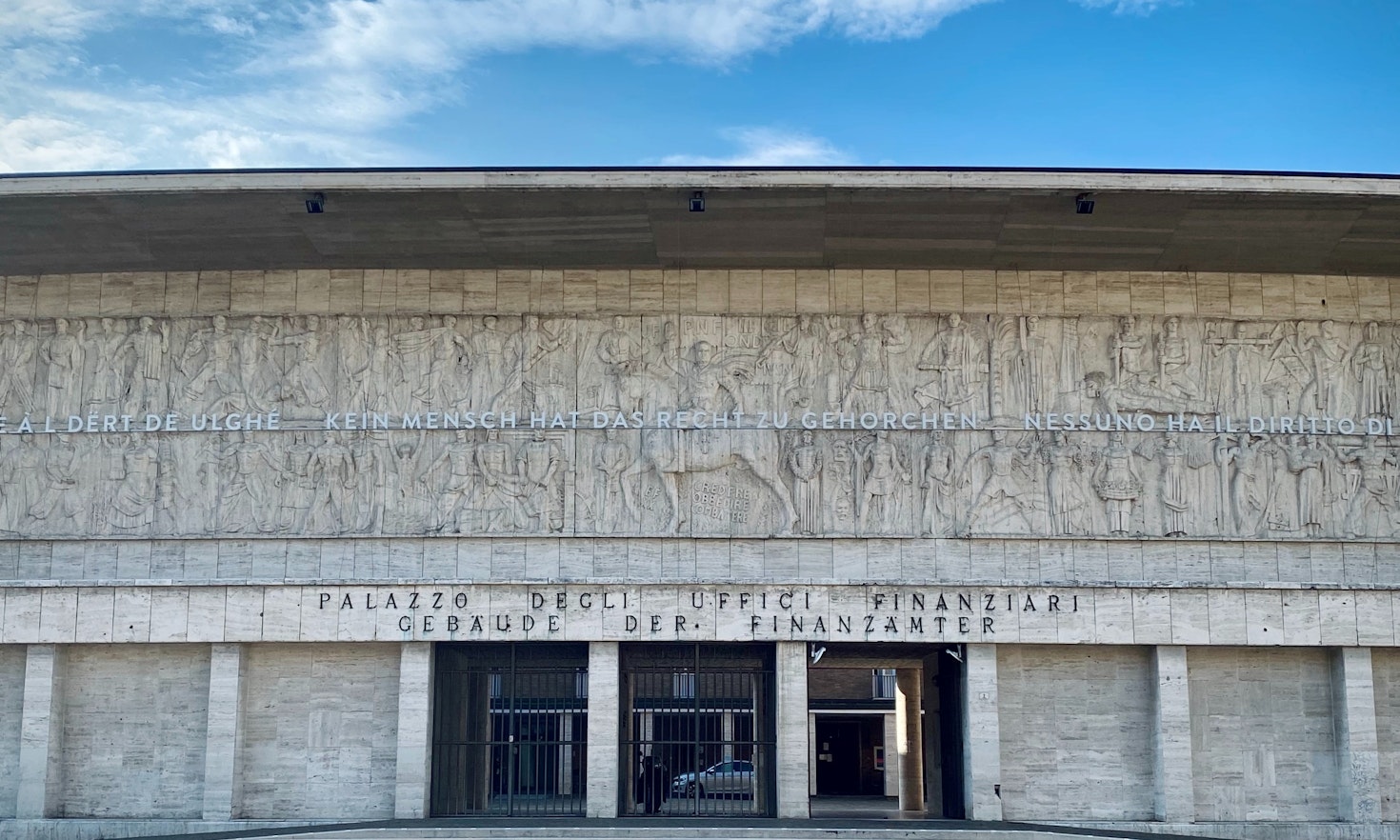![[IT] Between exit and disintegration: devolution e relazioni intergovernative nel Regno Unito dopo Brexit](https://webassets.eurac.edu/31538/1599754982-fred-moon-swjav6impm0-unsplashresized-2.jpg?w=680&h=457&fit=crop&crop=focalpoint&fp-x=0.5&fp-y=0.5&auto=format&dpr=1.5)
[IT] Between exit and disintegration: devolution e relazioni intergovernative nel Regno Unito dopo Brexit
 Gabriella Saputelli
Gabriella Saputelli
In summer 2020, protests originating in the United States against police brutality and racism soon spread to Europe and the debate about the legacy of monuments and statues commemorating controversial historical personalities re-emerged. However, there is a place in Europe that for a long time has already been dealing with this issue. Indeed, Italy’s Autonomous Province of Bolzano/South Tyrol still hosts some remnants of the Fascist regime. What is South Tyrol’s approach and, above all, how do South Tyroleans make use of that historical period?
Fascism undoubtedly represents one of the blackest pages in the history of South Tyrol. This Italian Autonomous Province, making up almost 0.5% of Italy’s total population and with the majority of its inhabitants being German speakers, owns a peculiarly unique history. Only three years after South Tyrol’s transfer to Italy, the territory had to face Mussolini’s repression of national minorities, a project which included the forced “Italianisation” of the area. Among other things, the use of German in the public sphere was prohibited, proper names were italianised, and a migration from other Italian regions took place to establish a bigger Italian-speaking community. As one can imagine, the Fascist era left numerous scars on the local population. One of these is rather tangible and still generates controversy: the Fascist monuments.
Historians, local politicians, and the public opinion have long discussed the legacy of these monuments, of which the Victory Monument and the building that served as seat of the National Fascist Party (pictured) are just two examples. In 2014, for instance, the opening of an art exhibition at the Victory Monument in the capital city of the Province spotlighted once again the unresolved disputes in South Tyrolean society. An author’s analysis of the political discourse in some Provincial Parliament meetings which occurred in 2009, 2014 and 2017 has emphasised the presence of three main positions on the issue, suggesting different solutions to the future of these monuments. The three narratives also reflect diverse interpretations of history, according to the historian Karlsson’s1 classification, which guided the original study.
In the eyes of the South Tyrolean Freedom – a political party seeking to represent the German-speaking population and calling for the independence of South Tyrol, the fascist monuments represent the glorification of the past. Consequently, they advocate for the removal of what they define “Fascist relics”, and they often recall how painful the Italianisation process was for the German-speaking group. In short, they affirm that these monuments only cause political and ethnic conflicts and do not constitute a means to comprehend and condemn that difficult historical period. In their view, the repression of the German speakers was too violent to not consider the Fascist monuments an “offence” to local citizens. This approach unveils an existential as well as moral use of history, attempting not only to forget but also to condemn Fascism. As such, this discourse is driven by both the need to forget and the indignation over the lack of sensitivity demonstrated by the portion of society who want to maintain these monuments.
A second narrative in the debate is represented by the position of the provincial branches of the Italian (centre-)right parties2, who argue that the monuments should be preserved as they are. In understanding the Fascist monuments as mere traces of the past, they oppose their removal and believe that they should be “safeguarded” and “respected”. This line of thought is essentially based on the idea that demolishing these monuments would represent the elimination of a page of the territory’s history. In doing so, they also argue that what happened in the past belongs to the past. Overall, this approach could be classified as a non-use of history, a rationale characterised by little attention being paid to the actual issue and a detached stance with regard to the ideas and historical events that these monuments evoke.
A third way is put forward by the South Tyrolean People’s Party, a pro-autonomy party representing the German and Ladin speakers and since 1948, the strongest political force at provincial level. At first sight, their position might appear as a compromise. Nonetheless, it actually represents a clear approach with a precise use of history. Indeed, this party not only harshly criticises the Fascist policies implemented in South Tyrol, but it also searches for a pacific solution that can reconcile the Italian and German linguistic groups, thus conferring such monuments with a symbolic meaning and seeing them as memorials. In doing so, they suggest “neutralising” them by transforming them, into museums for example, consequently weakening their original meaning and using them as an opportunity to learn from and reflect about the past. This approach may correspond to a political-pedagogical use of history, which aims at explaining and commenting on history, without erasing its traces.
To conclude, monuments and buildings built under the Fascist regime in South Tyrol constitute a truly divisive issue for the Italian and German speaking communities of this territory. While the discussion is continuously ongoing, three distinct perspectives can be observed from the political discourse in the Provincial Parliament. Removing, preserving, and neutralising the monuments are the different solutions brought forward by the local politicians, each pointing out opposing understandings of history and its significance today. If no consensus can be reached on the future of these monuments, however, one aspect certainly gets everyone to agree: Fascist monuments are still an open wound for most South Tyroleans.

This content is licensed under a Creative Commons Attribution 4.0 International license except for third-party materials or where otherwise noted.
![[IT] Between exit and disintegration: devolution e relazioni intergovernative nel Regno Unito dopo Brexit](https://webassets.eurac.edu/31538/1599754982-fred-moon-swjav6impm0-unsplashresized-2.jpg?w=680&h=457&fit=crop&crop=focalpoint&fp-x=0.5&fp-y=0.5&auto=format&dpr=1.5)
 Gabriella Saputelli
Gabriella Saputelli
 Simonetta Nardin
Simonetta Nardin
 Ulas Bayraktar
Ulas Bayraktar